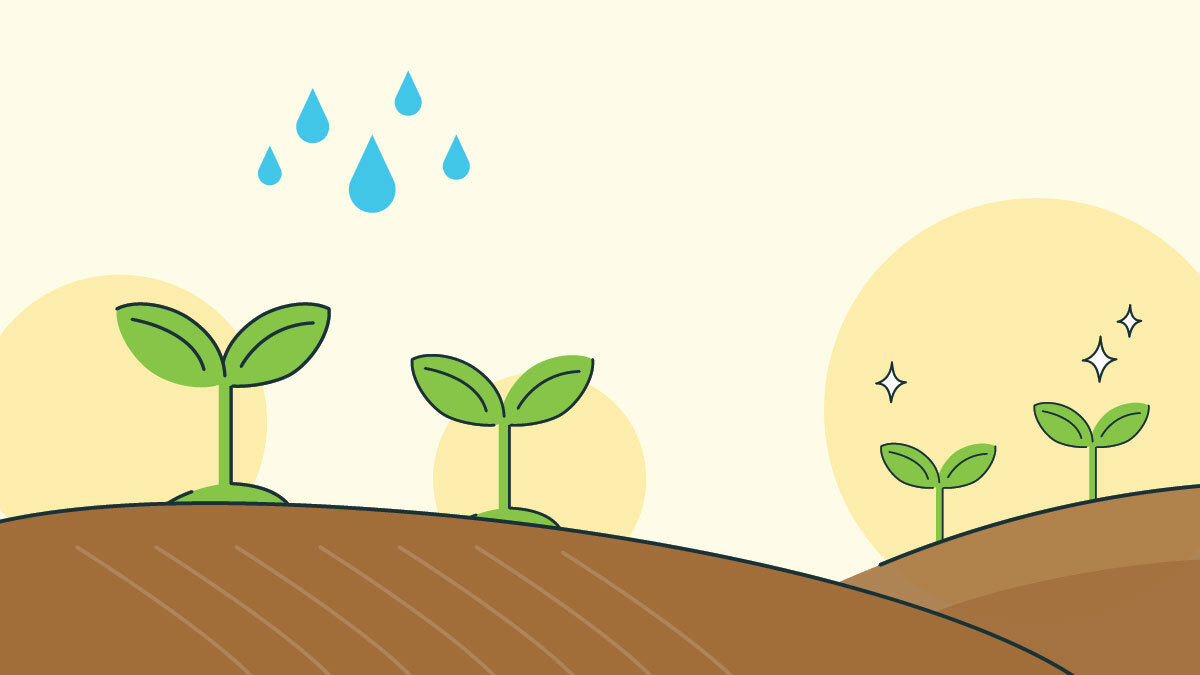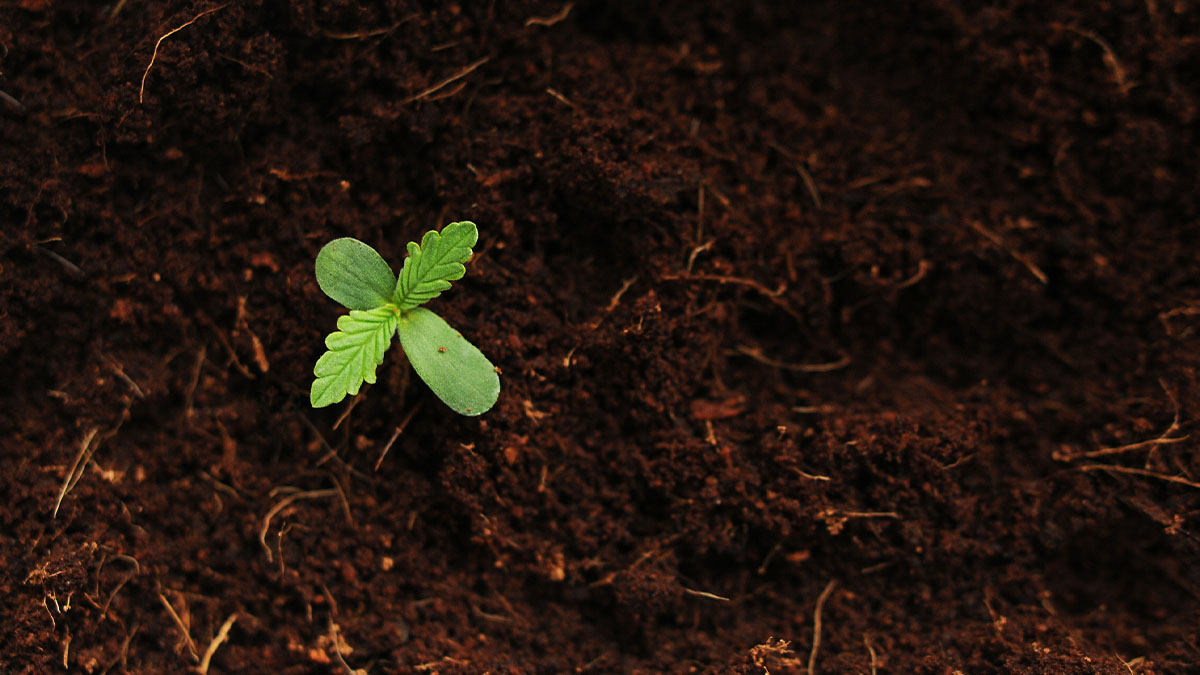What Is Living Soil for Growing Weed?

Boxers or briefs? Android or Apple? Coke or Pepsi?
Some arguments will never be decided. Are boxers more comfortable than briefs? Is IOS the only acceptable operating system, or is Apple the devil incarnate? Is Pepsi too sweet?
Here’s a similar argument that cannabis growers have had for decades: living soil vs. potting soil.
“Living soil” has become a buzzword in the growing community over the last few years, though. More and more companies are selling proprietary versions of living soil, with some calling it “super soil.” Some producers now even trumpet the fact that their bud was grown in the medium.
Great. Just as everyone was getting used to the benefits of organic growing, now there’s another term to understand.
Let’s try to provide some clarity.
What Is Living Soil?
The easy way to think of living soil is a medium for “organic growing on steroids.”
First, a clarification, “Organic” doesn’t really refer to soil; it describes growing practices and techniques. Organic methods focus on the avoidance of chemical fertilizers, pesticides, and additives in favor of natural alternatives, the conservation of biodiversity and reuse of resources, and the promotion of ecological balance.
You can probably guess that “living soil,” by contrast, focuses on the actual composition of the soil used as a growing medium. Organic farmers commonly use it, but it isn’t a requirement for organic growing. In fact, the Food and Drug Administration, which certifies products as organic [1], doesn’t have any specific criteria for the actual soil used by organic growers.
Living soil takes organic growing to the next level.
We’ve all encountered living soil on a walk through a nature preserve or a lush forest. It’s simply fertile, healthy soil that’s home to a community of natural organisms: worms, arthropods, other insects and small soil animals, protozoa, fungi, and bacteria. The advocacy group Sustainable Agriculture Research and Education [2] says a handful of living soil contains billions of those organisms.
And they’re all crucial to soil’s health. They break down organic matter and integrate it into the soil, providing nutrition to plants. They aerate the soil and create channels that allow water to reach plants. They make crucial micronutrients like nitrogen and phosphorous available to plants in usable forms. They help fight diseases and pests. And that’s (pardon the pun) just scratching the surface.
Sounds like an ideal choice, right? Whether you’re growing tomatoes or weed, soil that can help your plants is a very good thing.
But you just can’t walk into a store, buy some “living soil,” put your plants into it — and expect miracles.
The Care and Feeding of Living Soil

Nothing that’s alive will live forever; every organism requires nutrition, water, and air. That includes all of the organisms contained in living soil.
Lots of vendors sell living soil. It’s sometimes labeled as true living organic soil, real organic soil, super soil, or something similar. However, after a couple of growing seasons, that soil may become depleted or even inert with no natural, viable organisms left to speak of. Living soil must be regularly replenished.
You probably understand that ordinary fertilizer can’t be added to organic grows because it contains chemicals that are bad for the environment and potentially bad for human health. It’s also hazardous to the organisms in living soil.
Instead, organic growers who rely on this type of soil regularly replenish it by adding granular nutrients, aerobic microorganisms (contained in “compost tea”), and organic matter like compost, manure, earthworm castings, bone meal, and/or grass clippings. They also make sure that the soil receives ample amounts of water naturally.
That’s a good deal of work; you can’t just buy “living soil rejuvenator” in a spray bottle and apply it like Miracle-Gro. The hard work pays dividends in the long run, though.
There’s one other element necessary for the optimal use of living soil, and it’s a somewhat-unusual growing method.
No-Till Gardening
There’s a traditional sign that gardeners or farmers are getting ready for a new planting season: they till their soil.
Farmers use large machinery to turn over the soil, while home gardeners use hoes or spades. That loosens the top layer of soil and churns weeds and remnants from the previous year’s harvest back into the ground.
Tilling is antithetical to the use of living soil, however. It disrupts the delicate ecosystem that organisms and microorganisms have built below the surface — killing many of them and making it difficult for many more to live and prosper. It also contributes to soil erosion and water runoff.
That’s why “no-till” gardening is essential for the proper use of living soil as a growth medium. The nutrients, organic matter, and microorganisms added to the top of the soil break down over time, rejuvenating the soil and providing food for the next crop of plants.
And tilling isn’t really necessary. Remember the lush forest we talked about earlier? No one ever tills the soil there; it’s nurtured and reborn thanks to the organic matter that sustains it.
There’s one more rule that many growers follow when using living soil; they don’t dig up their plants when the season is over. They just cut off the stems at the soil line, allowing the roots and lower stems to degrade and contribute to the soil’s rejuvenation.
Is Living Soil the Right Choice for Marijuana Plants?
Commercial cannabis growers have traditionally avoided the use of organic and no-till techniques, instead using “ordinary” soil supplemented with mainstream fertilization techniques. The reason is simple to understand: those methods are likely to produce more rapid growth and bigger harvests.
Organic production is on the rise, though, since the methods produce healthier plants. And while there have been no detailed studies comparing weed grown with living soil and with ordinary soil, many users claim that organic weed grown in living soil is more potent and tastes better. That’s led to higher demand (and higher prices) for organically-grown flower.
That’s easy to believe when you see the results of a small review published in the Journal of Cannabis Research. It found that effective production of cannabinoids by marijuana plants may be affected by the health of the microbiota in which the plants are grown. That’s a vote of confidence for all-natural living soil.
There are definite drawbacks to using living soil for cannabis plants. It’s expensive, plants are likely to grow more slowly, and it can take several months before homemade living soil is ready for use. Mixing that soil can also be a pain.
However, the benefits outweigh the disadvantages. Plants don’t have to be flushed before harvest (because there are no chemical salts to wash away), the ground doesn’t have to be tilled, and it’s much less work to maintain the soil’s pH and nutrient balance.
Most importantly, the plants — and the weed they produce — are likely to be healthier and higher-quality.
Living Soil: FAQ
Q: You mentioned homemade living soil. Is it difficult to make?
A: Unfortunately, it is. You need organic soil, organic materials like fish bone meal, bat guano and earthworm castings, rock phosphate, and other ingredients like Epsom salts and dolomite lime. After they’re mixed, they must be allowed to compost and then “bake” in the sun with regular watering; the entire process can take a month or two. We’d rather buy it, to be honest, even though it’s more expensive that way.
Q: Where can you buy living soil?
A: These days, many gardening stores carry it, and you can easily find it online. Some of the brands to look for are Purple Cow Indicanja, Foxfarm’s Ocean Forest or Happy Frog, and Nature’s Living Soil.
Ahmed, B., & Hijri, M. (2021). Potential impacts of soil microbiota manipulation on secondary metabolites production in cannabis. Journal of Cannabis Research, 3(1), 1-9 [3].